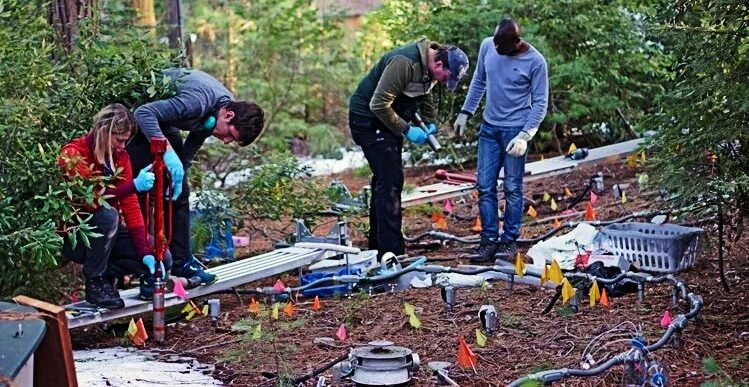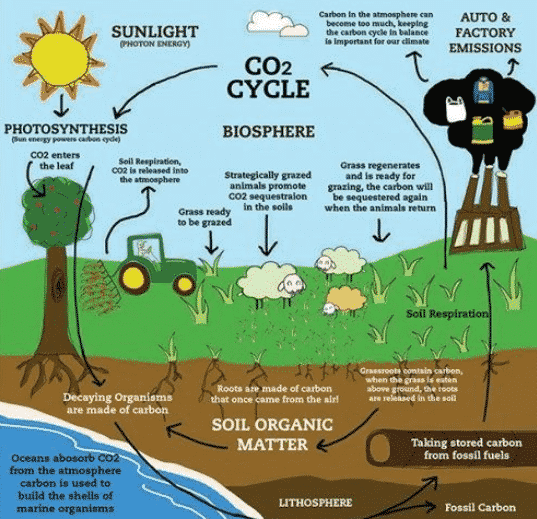A study by scientists at Lawrence Berkeley National Laboratory (Berkeley Lab) and the University of Zurich found that the decomposition of organic matters responsible for carbon sequestration in deep soil is significantly accelerated by global warming.
The alarming results have serious impacts on carbon projects that rely on forests and soil as nature-based solutions to mitigate climate change.
What is Soil Carbon Sequestration?
Soils are the largest natural sink for carbon. Soil carbon is a key component of the planet’s carbon cycle that maintains soil health and productivity. It comes in many forms such as decomposing organic matters.
Soil carbon sequestration is a process by which carbon dioxide is removed from the atmosphere and stored in the soil. It involves the conversion of CO2 into organic matter that stays in the soil for decades or even centuries, which is crucial to mitigate climate change.
During photosynthesis, plants store carbon in their cell walls and the soil, notably contributing to carbon sequestration. About 25% of the global carbon emissions are captured by forests, grasslands, and pasture land.
This natural carbon sequestration has been going around for decades. So the amount of carbon in the soil may now have doubled. 50% of this soil carbon content resides at the deeper layer in subsoils – over 8 inches or 20 cm deep.
But because of human activities such as deforestation and agriculture, global temperatures are heating up. CO2 emissions from these activities are increasing and account for about a fifth of global GHG emissions.
In effect, even the deeper layers of soil are now warming up, too. The researchers confirmed this. Their finding shows that climate change will impact all areas of soil carbon and nutrient cycling.
Margaret Torn, the study’s senior author and a senior scientist in Berkeley Lab pointed out that:
“It also shows that in terms of carbon sequestration, there’s no silver bullet. If we want soil to sustain carbon sequestration in a warming world, we will need better soil management practices, which can mean minimal disturbance of soils during forest management and agriculture.”
The Alarming Finding: Major Loss of Carbon Sinks
In a previous study in 2021, Torn and her team discovered that warmer temperatures result in a huge drop in carbon stocks stored in deep soils. Their results show a 33% loss over 5 years.
In this present study, researchers provided more evidence that higher temperatures cause a major drop in the soil organic carbon compounds produced by photosynthesis in plants.
The team at the University of California’s Blodgett Forest Research Station did an experiment in Sierra Nevada mountains. They used vertical heating rods to warm one-meter-deep plots of soil by 4°C (7°F). This is the projected warming level by year 2100 under a high GHG emissions scenario.
-
The scientists found that only 4.5 years of warming at this temperature resulted in major changes in carbon stocks at over 30 cm depth (12 inches) below the ground.
The researchers also did a spectroscopic analysis at the University of Zurich to know which organic compounds are affected. Here are their shocking findings:
- 17% loss in lignin – a compound that gives plants their rigid structure
- About 30% loss in cutin and suberin – waxy compounds in leaves, stems, and roots of the plants
Lastly, the team surprisingly found that there’s also a significant change in the amount of “pyrogenic carbon” in soil samples. This is one type of soil carbon from charred vegetation and other organic matters left by wildfires.
Pyrogenic carbon is the most stable form of sequestered carbon in soils. It can remain in the soil for up to centuries. And the researchers found much less of it in the artificially heated deep soils.
More remarkably, their results suggested that pyrogenic carbon can decompose as fast as other materials because of warming soil. This means that “when you put material deep into soil where it’s in contact with minerals and microbes, those natural systems will decompose the material over time,” Torn highlighted.
What All These Mean for Soil Carbon and Nature-Based Climate Solutions?
While further research is necessary to solidify the findings of the study, they do have significant implications in using soil carbon sequestration to tackle climate change.
Nature-based climate solutions largely involve forest conservation or restoration projects that sequester carbon in trees and soil. They also include agricultural practices that reduce carbon emissions or improve soil carbon storage.
Large companies and governments are investing heavily in this kind of natural carbon sequestration projects.
Given the findings, initiatives involving forests and soil carbon capture may have to reconsider how they approach these mitigation efforts. More sustainable farming and soil management practices like cover cropping would be critical.
Even the UN group tasked to finalize the international carbon trading systems may find the results relevant. They tend to consider nature-based solutions more reliable than technology in capturing CO2.
The researchers plan to resample the studied soil to know how nine years of heating affect the soil. They’ll be having a grassland warming experiment in Northern California and the whole-soil or deep-soil warming experiments for more knowledge.



